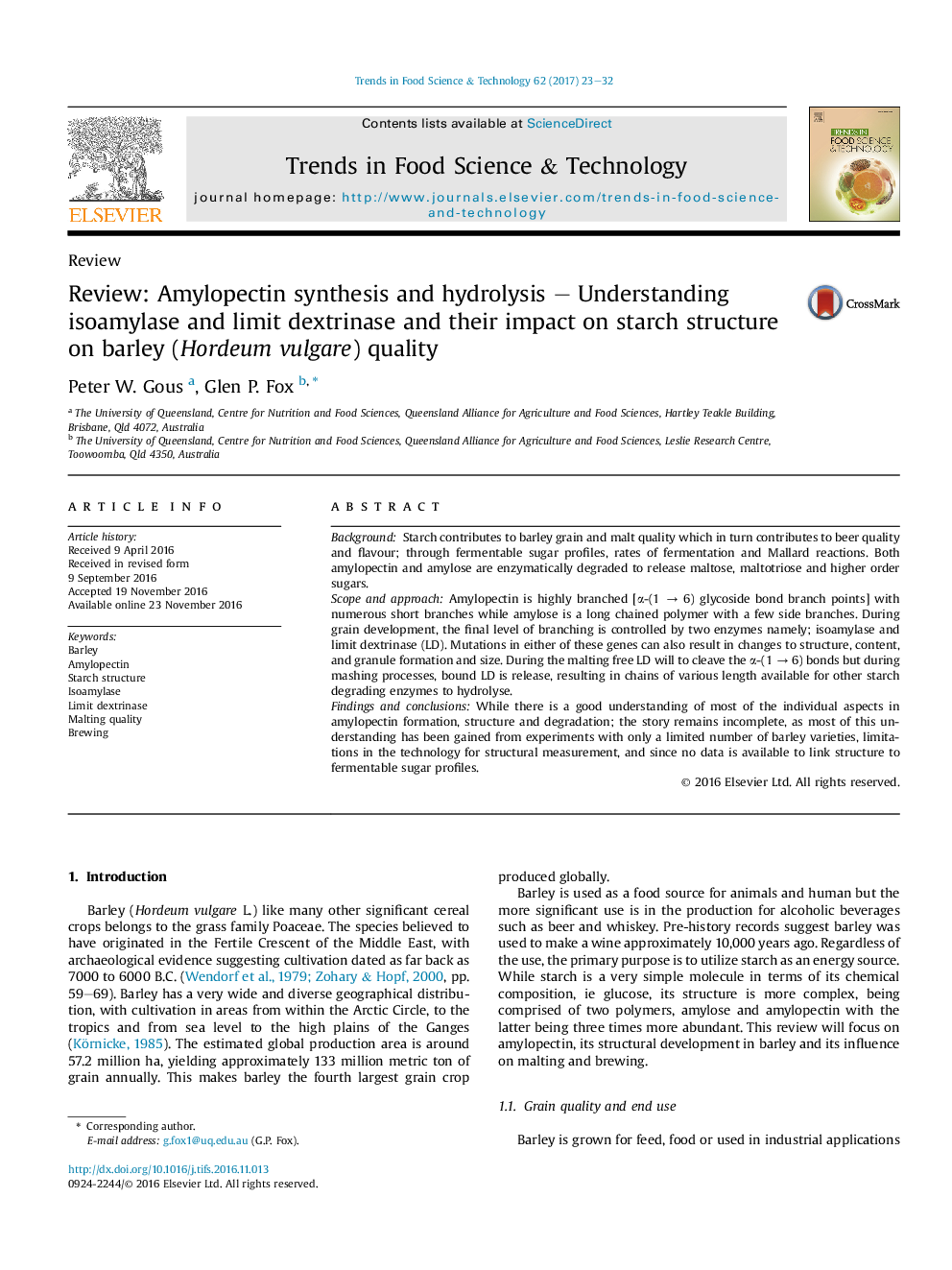| Article ID | Journal | Published Year | Pages | File Type |
|---|---|---|---|---|
| 5523642 | Trends in Food Science & Technology | 2017 | 10 Pages |
â¢Amylopectin is the most abundant polymer in barley.â¢Amylopectin is highly branched as a results of branching and debranching enzymes.â¢Limit dextrinase is one of the debranching enzymes.â¢Limit dextrinase acts during grain filling and post-harvest germination.â¢The role of limit dextrinase in both these modes is yet to be clearly defined.
BackgroundStarch contributes to barley grain and malt quality which in turn contributes to beer quality and flavour; through fermentable sugar profiles, rates of fermentation and Mallard reactions. Both amylopectin and amylose are enzymatically degraded to release maltose, maltotriose and higher order sugars.Scope and approachAmylopectin is highly branched [α-(1 â 6) glycoside bond branch points] with numerous short branches while amylose is a long chained polymer with a few side branches. During grain development, the final level of branching is controlled by two enzymes namely; isoamylase and limit dextrinase (LD). Mutations in either of these genes can also result in changes to structure, content, and granule formation and size. During the malting free LD will to cleave the α-(1 â 6) bonds but during mashing processes, bound LD is release, resulting in chains of various length available for other starch degrading enzymes to hydrolyse.Findings and conclusionsWhile there is a good understanding of most of the individual aspects in amylopectin formation, structure and degradation; the story remains incomplete, as most of this understanding has been gained from experiments with only a limited number of barley varieties, limitations in the technology for structural measurement, and since no data is available to link structure to fermentable sugar profiles.
